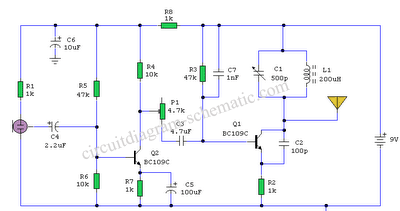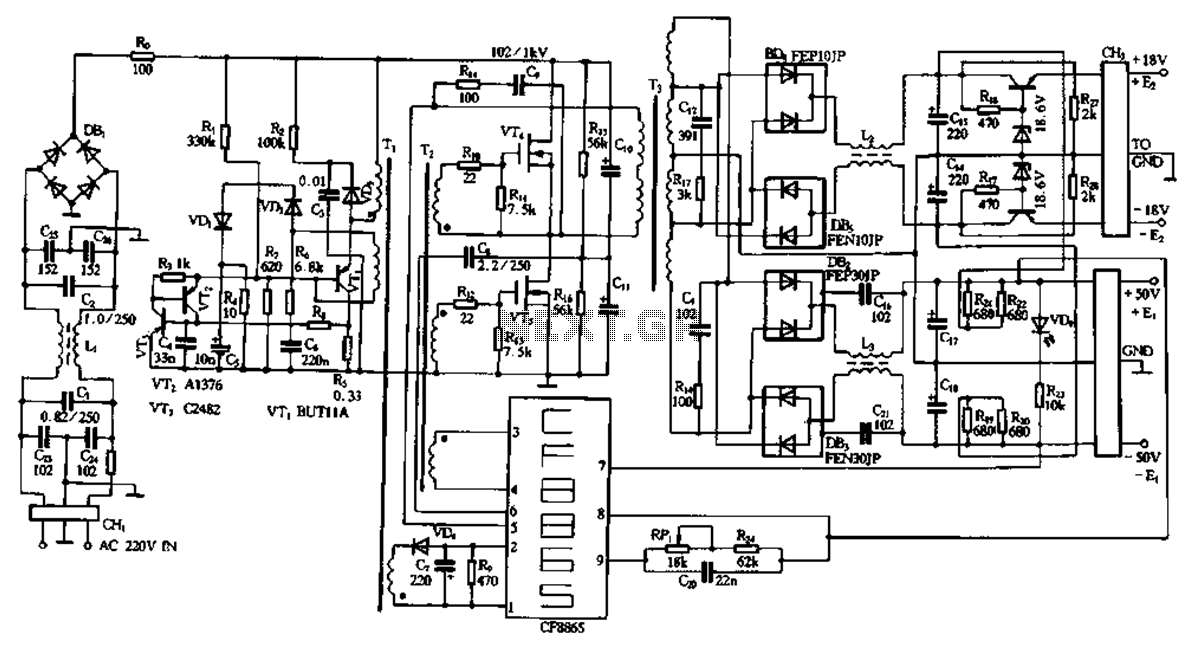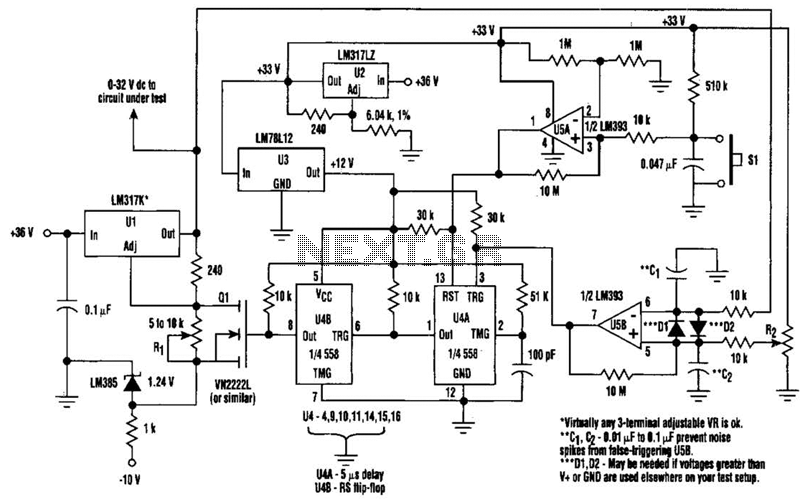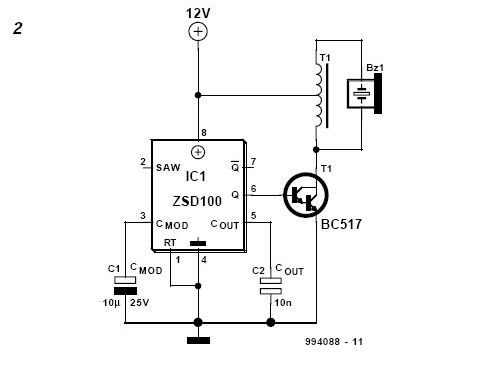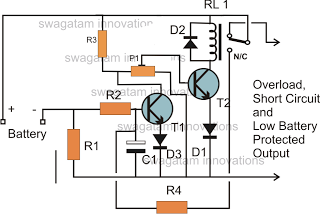
15-65MHz circuit diagram of the third harmonic
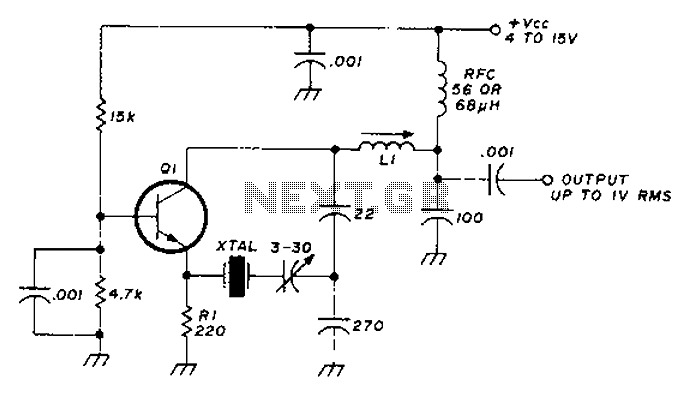
A circuit diagram illustrating the reliability of crystal startup, with power consumption significantly lower than the maximum allowed for the crystal. The transistor Q1 can be one of the following: 2N918, 2N3564, 2N5770, BF180, or BF200. The inductor L1 is associated with a crystal resonator that has a capacitance of 22pF, operating within the frequency range of 15-30MHz at an inductance of 1 H, or 30-65MHz at 0.5 H. This configuration provides good stability and serves as a fundamental frequency oscillator.
The circuit diagram focuses on enhancing the startup reliability of a crystal oscillator while maintaining low power consumption. The selection of transistors such as the 2N918, 2N3564, 2N5770, BF180, or BF200 allows for flexibility in performance characteristics, ensuring that the circuit can be tailored to specific application requirements.
The resonator's specifications indicate that it operates efficiently at two distinct frequency ranges, with the 22pF capacitance ensuring that the oscillator maintains stability across these frequencies. The inductor L1 plays a crucial role in tuning the oscillator circuit, allowing it to resonate at the desired frequencies of either 15-30MHz or 30-65MHz, depending on the selected inductance.
This design is particularly advantageous for applications requiring precise frequency generation with minimal power draw, making it suitable for battery-operated devices or energy-efficient systems. The combination of the chosen components facilitates a reliable oscillator that can maintain performance under varying operational conditions, thereby enhancing overall circuit reliability and efficiency.A circuit diagram of the crystal startup reliability, power consumption is much lower than the crystal maximum allowed. Q1 is 2N918,2N3564,2N5770, BF180 or BF200. L1 frequency crystal resonator is 22pF (15-30MHz, 1 H or 30-65MHz, 0.5 H). As good stability and the fundamental frequency oscillator.
The circuit diagram focuses on enhancing the startup reliability of a crystal oscillator while maintaining low power consumption. The selection of transistors such as the 2N918, 2N3564, 2N5770, BF180, or BF200 allows for flexibility in performance characteristics, ensuring that the circuit can be tailored to specific application requirements.
The resonator's specifications indicate that it operates efficiently at two distinct frequency ranges, with the 22pF capacitance ensuring that the oscillator maintains stability across these frequencies. The inductor L1 plays a crucial role in tuning the oscillator circuit, allowing it to resonate at the desired frequencies of either 15-30MHz or 30-65MHz, depending on the selected inductance.
This design is particularly advantageous for applications requiring precise frequency generation with minimal power draw, making it suitable for battery-operated devices or energy-efficient systems. The combination of the chosen components facilitates a reliable oscillator that can maintain performance under varying operational conditions, thereby enhancing overall circuit reliability and efficiency.A circuit diagram of the crystal startup reliability, power consumption is much lower than the crystal maximum allowed. Q1 is 2N918,2N3564,2N5770, BF180 or BF200. L1 frequency crystal resonator is 22pF (15-30MHz, 1 H or 30-65MHz, 0.5 H). As good stability and the fundamental frequency oscillator.

